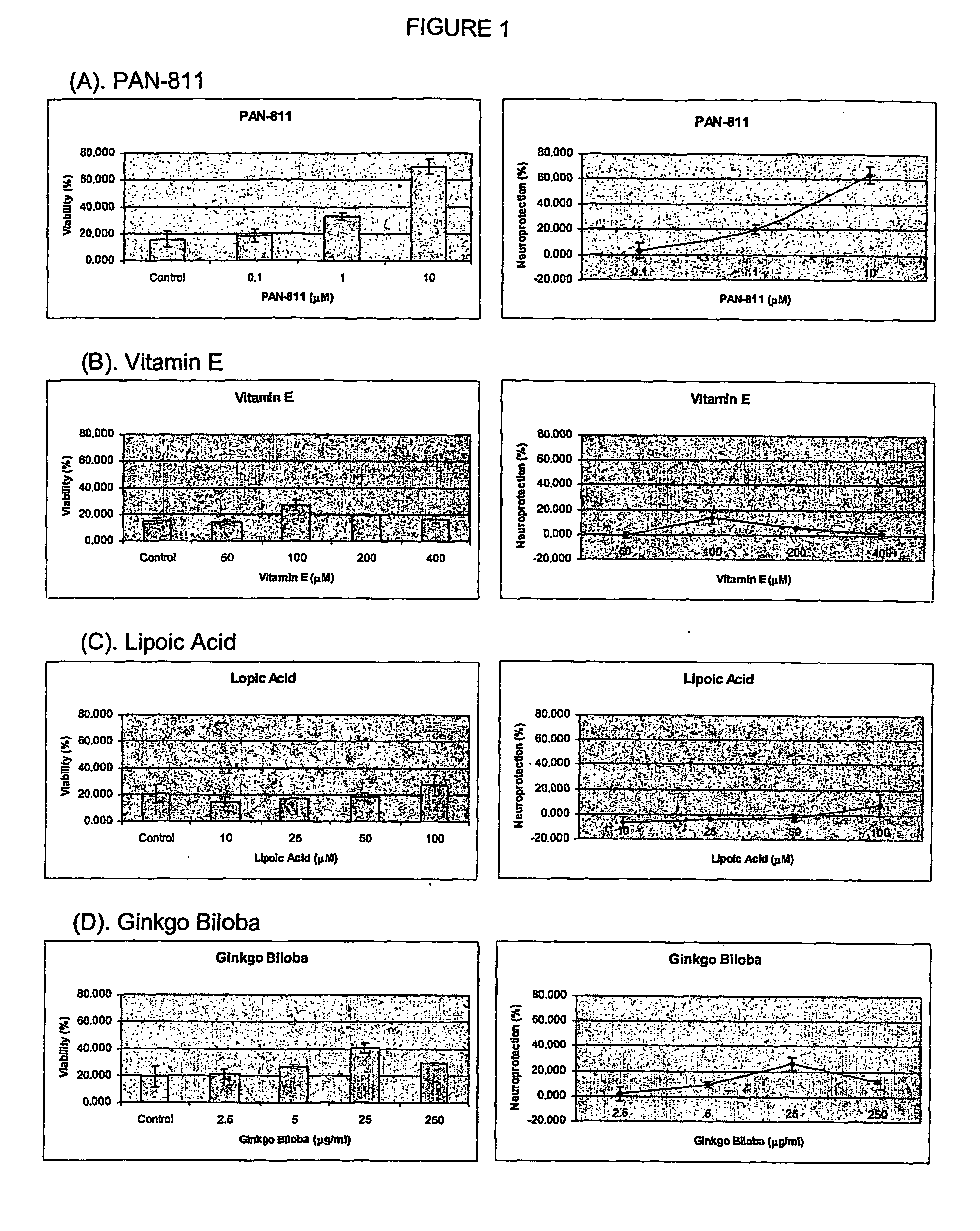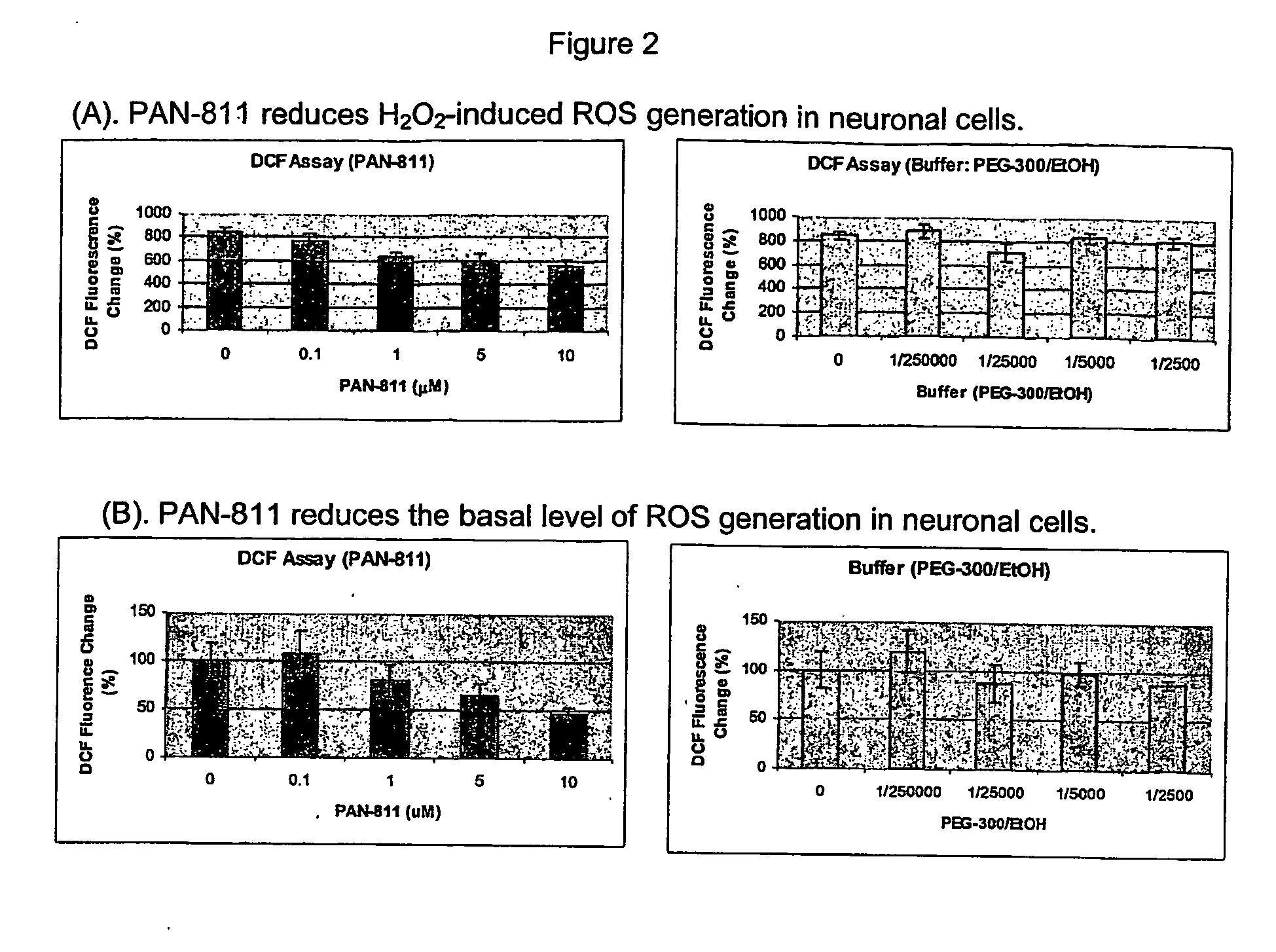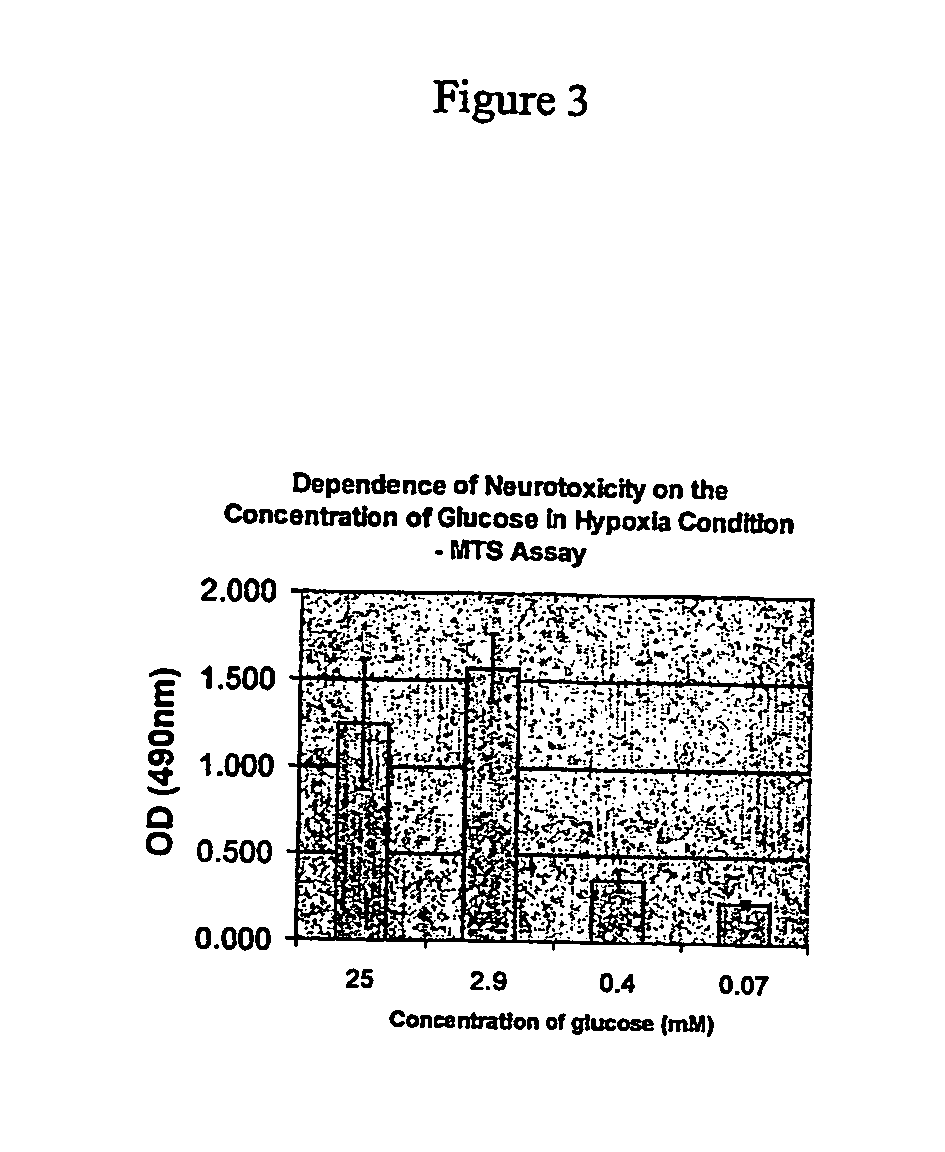Methods of treating ischemic related conditions
- Summary
- Abstract
- Description
- Claims
- Application Information
AI Technical Summary
Benefits of technology
Problems solved by technology
Method used
Image
Examples
example 1
Comparison of the Neuroprotective Potencv of PAN-811 with Other Known Neuroprotectants
[0066] The purpose of this study was to compare the neuroprotective capacity of PAN-811 (3-aminopyridine-2-carboxaldehyde thiosemicarbazone; C7H9N5S; MW=195) with known neuroprotectants, such as vitamin E, lipoic acid and Ginkgo biloba, in a cell-based model of Alzheimer's disease-associated oxidative stress.
Isolation and Acculturation of Cells.
[0067] Primary cortical neurons were isolated from a 17-day old rat embryonic brain and seeded on 96-well plate at 50,000 cells / well in regular neurobasal medium for 2-3 weeks. Twice, half the amount of medium was replaced with fresh neurobasal medium containing no antioxidants.
Treatment with PAN-811, Other Known Neuroprotectants and H2O2
[0068] PAN-811 was dissolved in EtOH at 1 mg / ml (˜5 mM), and further diluted in medium to final concentration at 0.1 μM, 1 μM, and 10 μM. The other known neuroprotectants were dissolved in appropriate solvents and di...
example 2
Effect of PAN-811 on Reactive Oxygen Species (ROS) Generation in Neuronal Cells
[0074] The purpose of this study was to assess the capability of PAN-811 to reduce ROS generation in a cell-based model of Alzheimer's disease-associated oxidative stress.
[0075] Materials used in this example are the same as in Example 1.
[0076] Primary cortical neurons were isolated from a 17-day-old rat embryonic brain and seeded in 96-well plates at 50,000 cells / well in regular neurobasal medium for 2-3 weeks. Twice, half the amount of medium was replaced with fresh neurobasal medium without antioxidants.
[0077] The primary cortical neurons were rinsed once with HBSS buffer and incubated with 10 μM 5-(and-6)-chloromethyl-2′,7′-dichlorodihydrofluorescein diacetate, acetyl ester (CM-H2DCFDA) to pre-load the dye. The cells were then rinsed with HBSS buffer once and treated with PAN-811 at final concentrations of 0.1, 1, 5, and 10 μM for 1 hour, and further subjected to oxidative stress induced by hydro...
example 3
PAN-811 is Neuroprotectant for Hypoxia- or Hypoxia / Hypoglycemia-Induced Neurotoxicity
[0084] The purpose of this example was to understand whether PAN-811 is able to protect hypoxia- or hypoxia / hypoglycemia (H / H)-induced neurotoxicity by examining its effects in vitro. As shown in the above examples, PAN-811 has been shown in related work to apply significant neuroprotection to primary neurons treated with H2O2.
[0085] The materials used in this example are the same as in Example 1. The LDH assay kit was obtained from Promega.
[0086] (Abbreviations: BSS=balanced salt solution; CABG=coronary artery bypass graft; d.i.v.=days in vitro; EtOH=ethanol; H / H=hypoxia / hypoglycemia; LDH=lactate dehydrogenase; MCAO=middle cerebral artery occlusion; NB=neurobasal medium; NMDA=N-methyl-D-aspartate; PEG=polyethylene glycol)
[0087] Experiments were performed in a 96-well plate format. Cortical neurons were seeded at a density of 50,000 cells / well on a poly-D-lysine coated surface, and cultured in ...
PUM
| Property | Measurement | Unit |
|---|---|---|
| Fraction | aaaaa | aaaaa |
| Time | aaaaa | aaaaa |
| Time | aaaaa | aaaaa |
Abstract
Description
Claims
Application Information
 Login to View More
Login to View More - R&D
- Intellectual Property
- Life Sciences
- Materials
- Tech Scout
- Unparalleled Data Quality
- Higher Quality Content
- 60% Fewer Hallucinations
Browse by: Latest US Patents, China's latest patents, Technical Efficacy Thesaurus, Application Domain, Technology Topic, Popular Technical Reports.
© 2025 PatSnap. All rights reserved.Legal|Privacy policy|Modern Slavery Act Transparency Statement|Sitemap|About US| Contact US: help@patsnap.com



